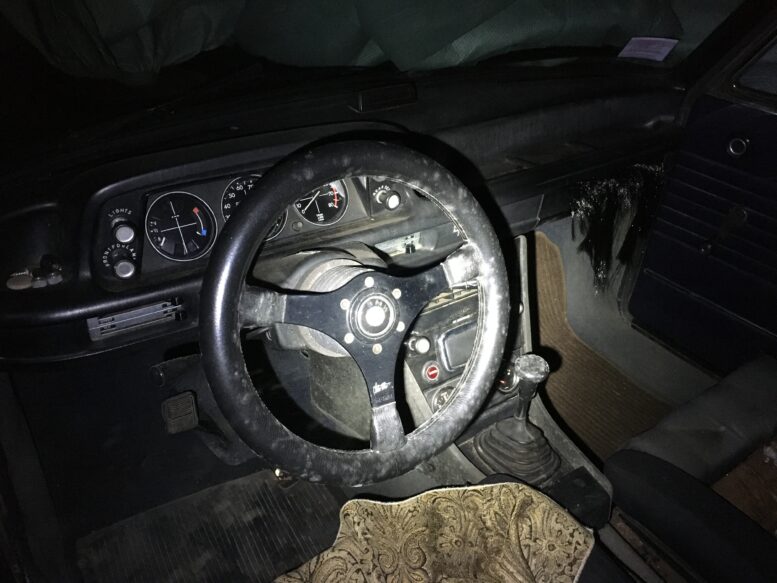A few weeks ago, I wrote about driving out to the warehouse on the Massachusetts / Connecticut line where I store five cars and swapping round tail light 2002 #1 (Louie, the Ran When Parked ’72 2002tii) for round tail light 2002 #2 (Hampton, the 49,000-mile ’73 survivor car). What I didn’t say was that there was a rude surprise waiting for me.
Mold. And quite a bit of it.
If you’ve been reading my stories for a few years, you’ve seen the ups and downs of my storage situation—the burgeoning number of vehicles, the storage of five cars in five individual roll-up bays in Fitchburg, a mold situation that exploded when the roof began leaking during a particularly wet summer, the gradual lessening of the problem due to both drier weather and the roof being replaced, the Fitchburg house being sold and my being given notice about the lease on my rented garages, my and my wife Maire Anne’s thinking about moving to a car-centric property in western Massachusetts or southern Vermont, my finding inexpensive short-term-lease storage in Monson, my being unhappy with it due to the distance and the access restrictions, and my general acclimation that it’s the hand I’ve been dealt, it’s not hardship, stop complaining already.
Well, I’m complaining again. Moldy cars will have that effect on a car person.
As I checked the five cars that were out there (Hampton the ’73 2002, Bertha the ratty ’75, the ’73 Bavaria, the ’79 Euro 635CSi, and the ’74 Lotus Europa Twin Cam Special), I felt out the envelope of the problem. As had happened in Fitchburg years back, it had been a very rainy summer, and the roof of the enormous Monson warehouse leaked. Back in July, I wrote about finding water dripping directly on the cover of the Bavaria. Although there aren’t formal assigned spaces in the huge warehouse, my cars have been part of two rows close to an outer wall. In July when I found the water dripping on the Bavaria, I pulled the car forward one space (out of the direct dripping path of the water), and didn’t think too much else of it. This time, though, with the continued rain, a pretty good-sized spread of standing water had accumulated on the floor.

This doesn’t look that bad, but you really don’t want cars parked over moisture.
As I triaged the mold in all five cars, I found something that made sense—the cars with the most mold were the ones sitting in or nearest the water, and had their windows cracked open. I’d never been certain of the whole windows-up versus windows-cracked thing for cars left in storage, but I am now. The Lotus, which was sitting in water and had the windows cracked several inches, was the worst of the bunch, with mold on many of the leather/vinyl surfaces including the seats and steering wheel.
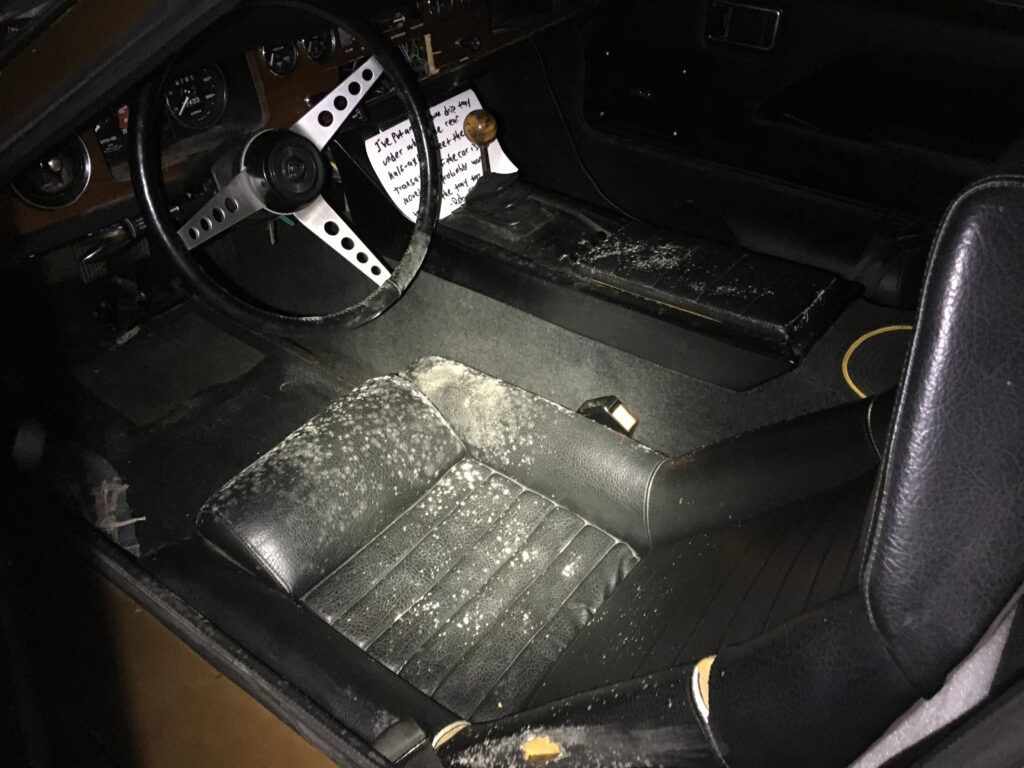
Not good!
Next was the Bavaria. There, the mold seemed to largely bypass the hard surfaces but had an affinity for the floor mats.
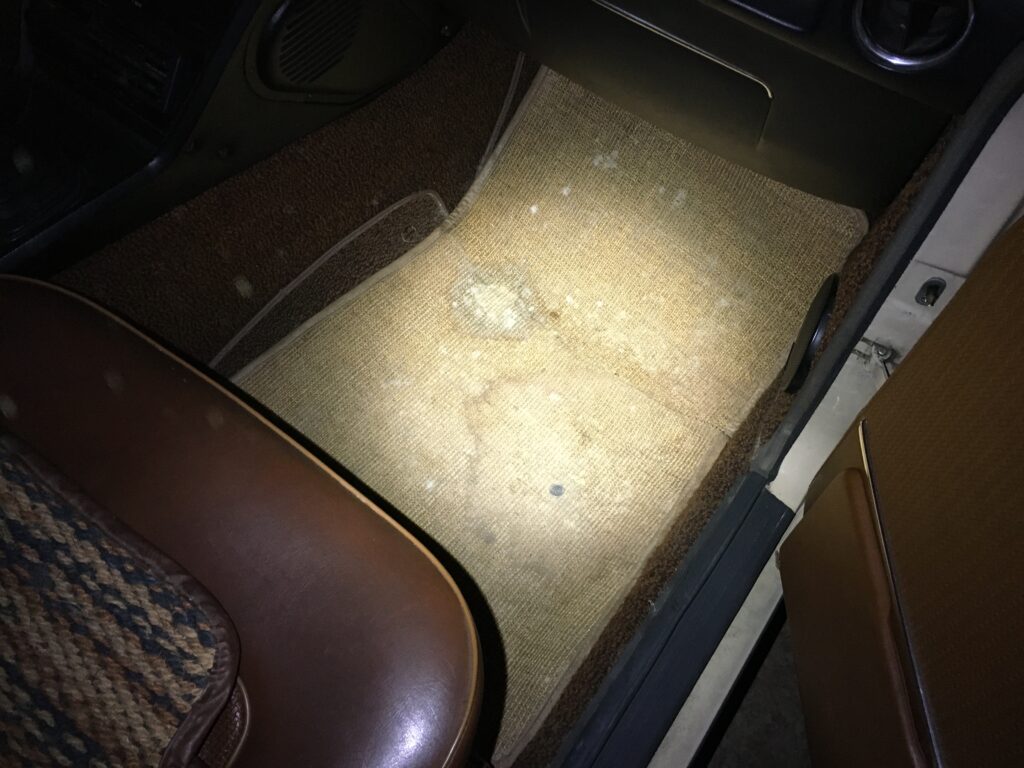
This was the passenger size floor mat of the Bavaria.
The 635CSi had just a little mold on the hard surfaces of the dash and console, but had a truly alarming amount on the rug in the passenger footwell.
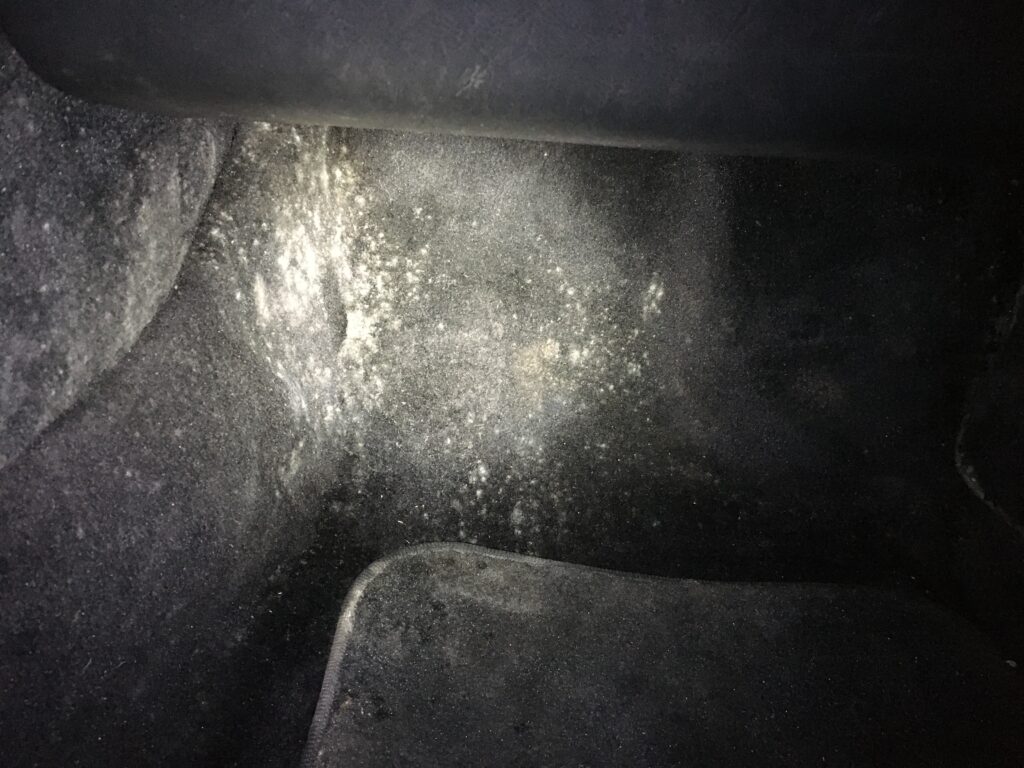
NNNNnnnnoooo
The mold on Bertha was the least alarming, not just because the car is by far the rattiest of the bunch, but because the mold had largely confined itself to the easily-wipeable steering wheel and console.

Really, not much of a change to Bertha.
Fortunately, pretty little (and valuable) Hampton had almost no mold, as it wasn’t sitting in water and had been left with the windows rolled completely up.
My reaction to this ping-ponged between pragmatic and panic. On the one hand, when you’re only paying $70/month for storage, you get what you pay for. It’s a warehouse used for the owner’s industrial irrigation business, his oddball collection of French cars, and winter storage of boats, RVs, and trailers. It’s not climate-controlled. There’s no man-cave or motorsport artifice about it, nary a vintage gas pump or a Ferrari prancing horse in sight. When I began storing cars there, the landlord said that the roof sometimes leaks, that he fixes one leak and another one springs, and that roof maintenance on a building like this is done in ten-thousand-dollar increments. A combination of covers on the outside of the cars and DampRid on the inside had always worked well enough. But not now. It hurt to see my cars get this moldy this quickly. I felt like a negligent hoarder. I thought that The Great Monson Experiment had just crashed and burned and I was going to need to quickly move to do something else.
I had gone out there to quickly swap cars. I hadn’t planned on spending the day there dealing with mold. So I needed to be efficient. I drove to a nearby hardware store, bought some cleaning wipes and a gallon jug of DampRid to refill the containers, and quickly addressed the acute needs of each car by wiping down the affected areas. In the Bavaria, by far the worst areas were the moldy floor mats, so I simply pulled those out and brought them home with me to rinse out and dry in the sun.
Next I emptied and refilled the DampRid containers. When I did so, I realized something—all of the white moisture-absorbent flakes in the top part were gone, and the bottom half was full of water. In other words, I’d been away too long. I realized that, when there’s this much moisture, I can’t go months without visiting the cars and changing the DampRid.
When I got home, I did what I swore to myself I wouldn’t do—I began pounding on Zillow again, looking for car-centric properties. I’d devoted endless hours to this during the pandemic, only to find out that Maire Anne and I had different visions of where we wanted to move, and until that’s resolved, looking is pointless. One of my Hack Mechanic Tips for Sane Living™ is not craving things I can’t have. (Note that my wife had cardiac surgery in July, so if several years ago I’d regarded the whole issue of how far we are from world-class hospitals as a largely academic one, I certainly don’t regard it as academic now.) I unearthed a few interesting properties—you know, places in central Vermont with what looked like an airplane hanger but no house—posted them on Facebook for the entertainment of my readers, and got some good-natured ribbing from Maire Anne about it. But I knew that, if sitting in mold in Monson was bad for the cars, going down the car-centric storage rabbit hole again without any way out of it was really unhealthy for me.
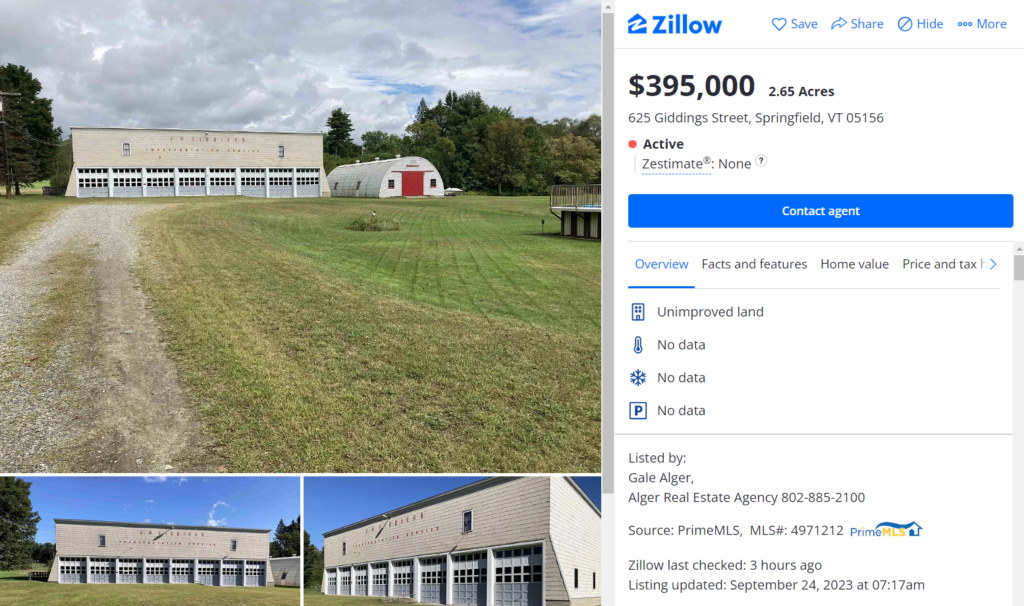
This DID look pretty cool. I mean come on.
About ten days later, I went back out to Monson, armed with five more DampRid containers and some spray mold cleaner / blocker. It hadn’t rained much since I was last out there, so the puddle around the cars had mostly dried up. One at a time, I drove each car for about twenty minutes with the windows down, then mold-abated it. There wasn’t much water in the DampRid containers, but I emptied it, took out the flakes that had swelled with absorption, and put a second container in each car, thereby doubling up the total capacity. Then I cleaned any remaining mold and treated all the horizontal surfaces (mainly rugs and seats) with the cleaner / blocker.
When I covered the cars back up, I noticed something else. Some of the covers had dark stains on them. I realized that they were coming from water that had gotten through the roof and the insulation, a not terribly healthy combination.

Looking down…
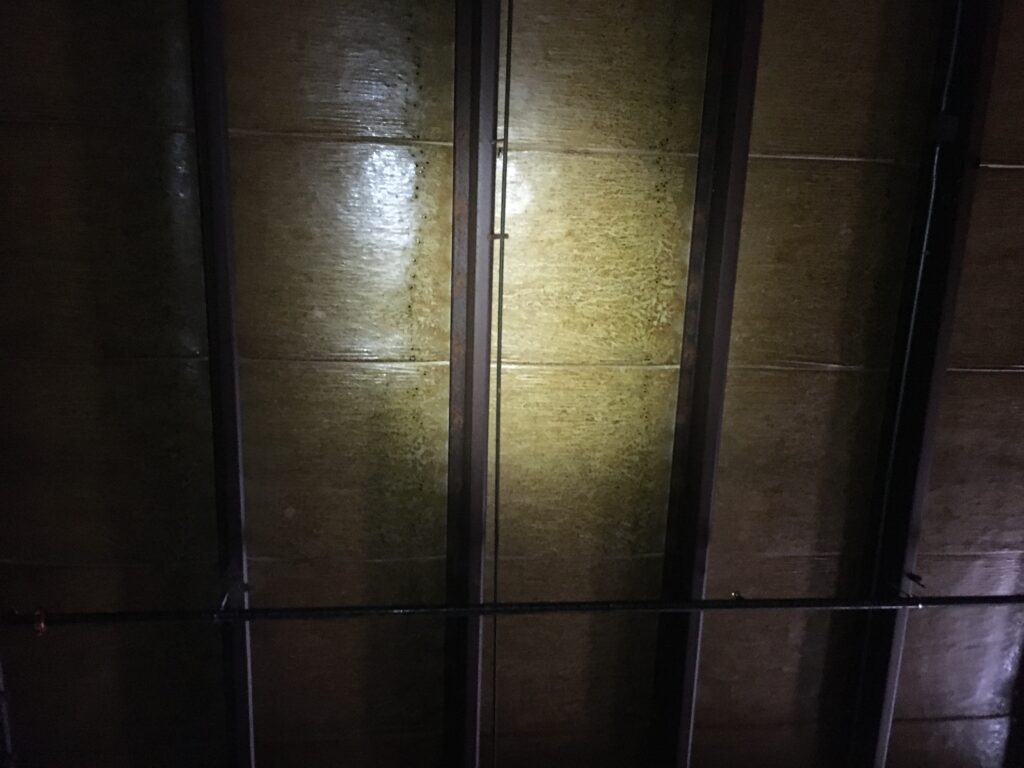
…and looking up.
I noticed that many of the cars in the warehouse were draped with disposable non-permeable plastic covers. I resolved to order some. When I got home, I found that I could buy a pack of five of them on Amazon for $35 (no I don’t get kickbacks).
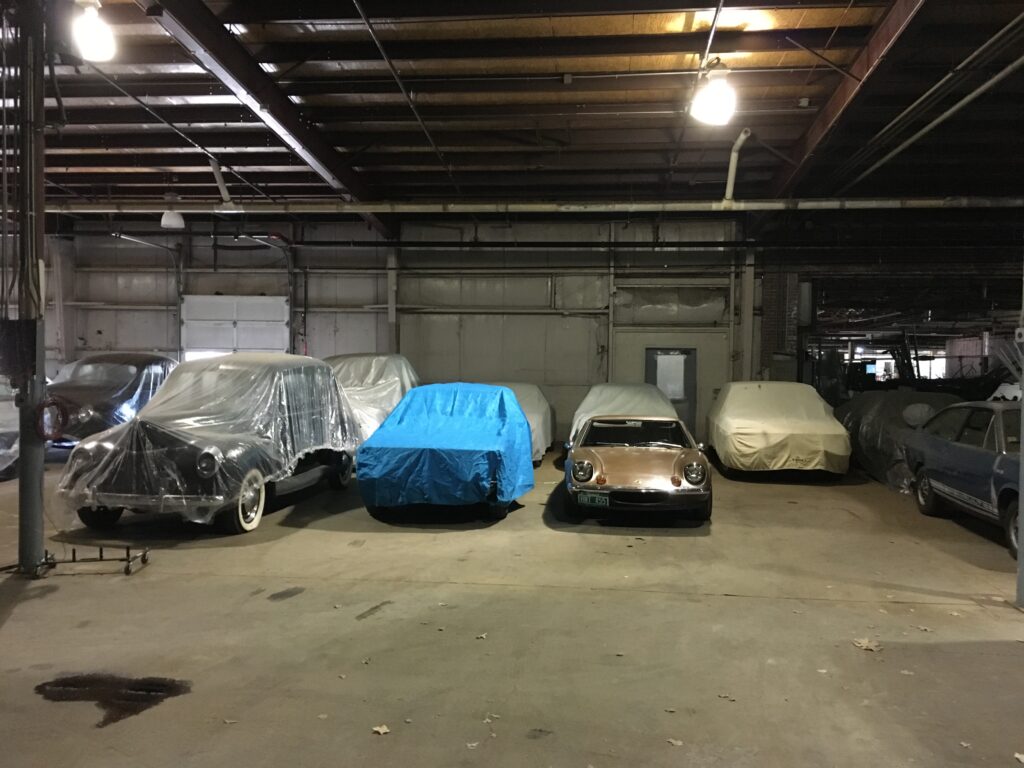
The owners of the cars to the left of mine are smarter than me.
With all that, I’d largely walked myself backwards from the ledge. I was back to thinking that the whole Monson warehouse thing, while far from ideal, is workable. As long as I leave the cars’ windows rolled up, visit the cars frequently enough that I can change the DampRid before it gets used up, and prevent gooey stuff from getting through the covers, it’ll be fine. I don’t need a car-centric property. I’m good.
Oh, wait…
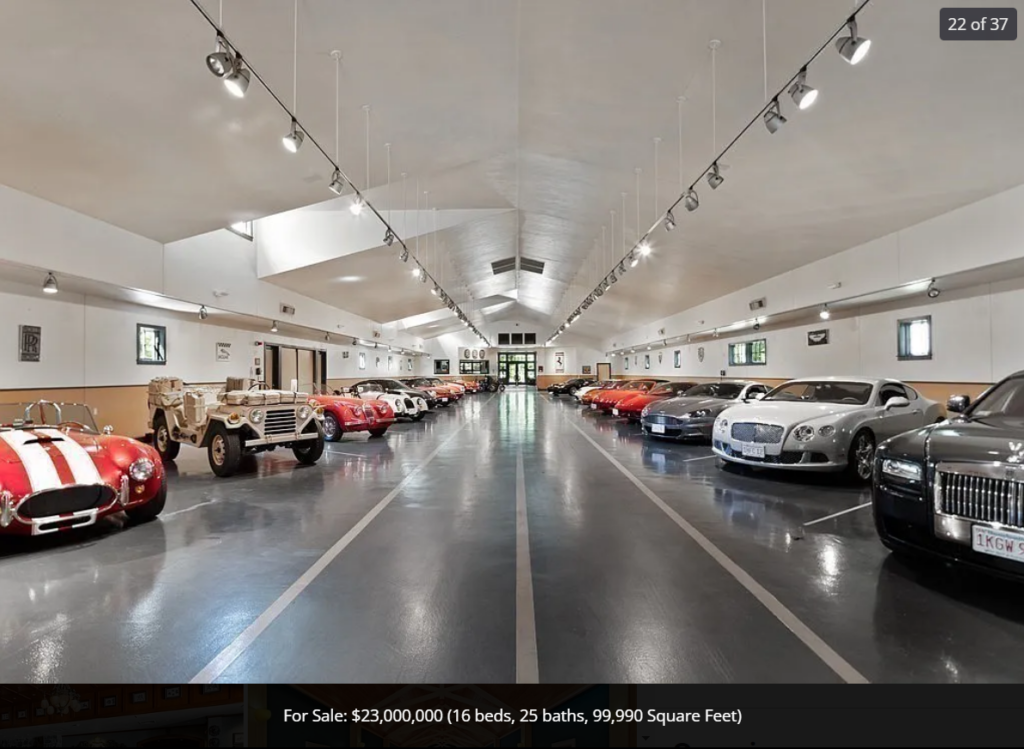
—Rob Siegel
____________________________________
Rob’s newest book, The Best of The Hack Mechanic, is available here on Amazon, as are his seven other books. Signed copies can be ordered directly from Rob here.

